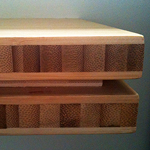If you missed the March AIA Los Angeles Home Tour, here is our preliminary overview of the event and some of our own images of the four featured homes in Beverly Hills, Bel Air and Brentwood, designed by such well-known architects and design firms as SPF:a, Assembledge and Cory Buckner Architects.
The tour started with the Latimer Residence by Rick Leslie, Rick Leslie Architects is the home and office of the architect, a 4,700 SF structure located in a beautiful eclectic neighborhood in Santa Monica.
Encompassing seven levels, the dynamic spaces incorporated movement through the layering of wall planes, unique and differentiated ceiling treatments, and varying floor, wall, and soffit heights. This dynamism was reflected at the interior detailing and selection of finishes and materials, which included bamboo, quartz composite, resin counters, and more.
The design features this eclectic approach at the exterior of the home, with the use of a variety of materials, including burnished cmu block, board-formed concrete, metal panels at the exterior walls and roof, and angled windows at unexpected locations and clerestory glazing systems.
The second home, Brentwood Residence by Cory Buckner, of Cory Buckner Architects was one of the favorites on this tour... From an architectural standpoint, we loved the clean lines and critical attention to detail, especially in terms of material transitions, terminations, and connections. This approach is evident in both the interior spaces, as well as the exterior. As exemplified in the images below, the cedar siding's bleached tone is a material choice providing an aesthetic counter to balance the other exterior materials in terms of texture, appearance,and application.
Located on a steep, sloping site, the home follows the natural topography, with a cantilevered pool overlooking the incredible view of Santa Monica. As one enters the home, it appears to have a very low-profile from the street, in order to relate to this architecturally-rich community of Crestwood Hills. The project also features a beautiful detached art studio at the base of the site, where skylights create a connection to the landscape and natural light for this inspired workspace.
In the meanwhile, visit AIA | LA's website for more on these projects.













